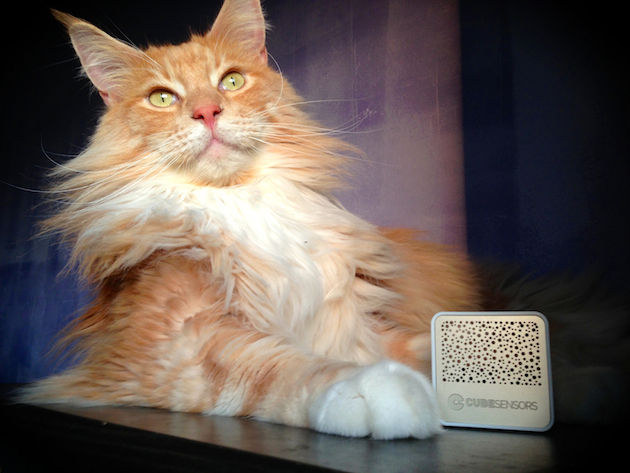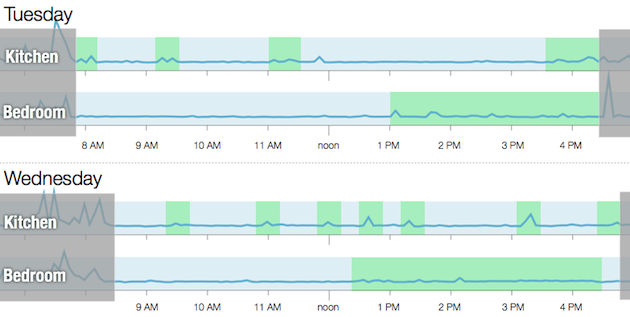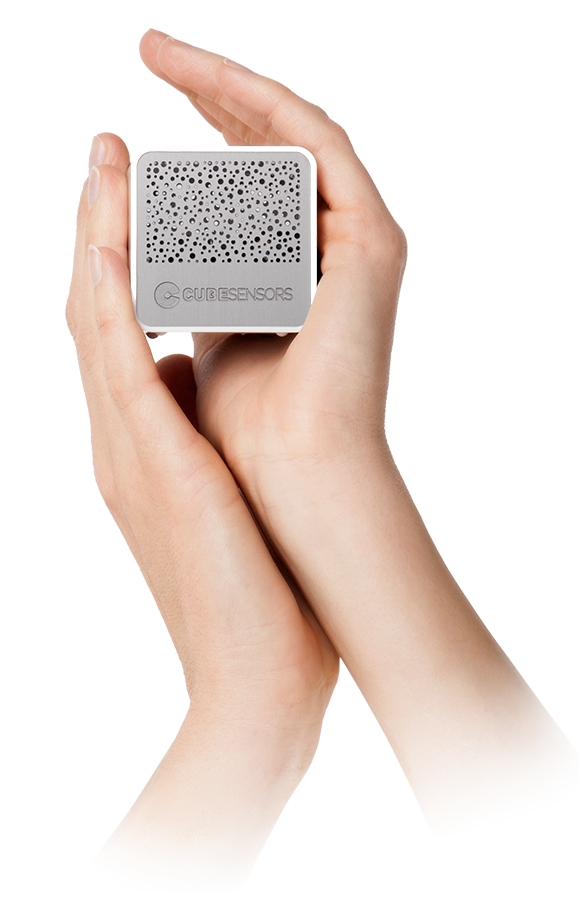Home experiment: What do cats do when they are alone?
by Alja Isakovic
It’s a commonly held belief: when left alone, cats spend most of their time sleeping. But is this really true? Now that I have CubeSensors in each of the rooms of my home, it’s easy to keep track of my two cats, Epic, a four year old Maine Coon, who likes to pose with our Cubes; and Blink, a one year old Devon Rex, who’s only still when he’s sleeping.

The easiest way to check for activity is to look at the noise data in all rooms. We keep the living room and bathroom closed off when we’re away to prevent mischief such as chewing on headphones (been there, done that). So the cats basically have three rooms to hang out in: the kitchen, where they have a fresh supply of kibble and water; our bedroom; and a guest room, where they often sleep when we’re home and where their litterbox is.
After looking at the data, it quickly became obvious that the guest room doesn’t see that much activity when we’re away. Practically flat noise levels. By looking at data from the other two rooms, it also became clear that our cats do have an established routine. In the morning, it’s snack time in the kitchen. Two noise peaks close together mean the cats are taking turns eating their kibble, as usually. Our kitchen Cube is quite close to their food bowls, so the loud crunchy noise shows just enough to see when it’s snack time.
In the afternoon, the main point of interest becomes our bedroom. The cats have had their naps and snacks, so they start making a bit more noise around 1 PM. That’s perfectly in line with their behavior during weekends, when we’re at home.
Keep in mind that cats are pretty silent creatures, so any spike in noise means they are up to no good. There’s probably some playing around going on, which sometimes moves into the kitchen. Yep, cats get hungry when they chase each other around! And the good news is that they never make enough noise to disturb the neighbors. Humans definitely have a much noisier presence. I do wonder about dogs though; we’d need a multi-dog household to compare.
And finally, there’s a bit of extra activity before the time my husband usually gets home. They’ve had their fun and are now ready for their human servants to provide fresh food and cuddles.
You can look at my noise charts from the past two days below. I’ve only included the two rooms with the most activity and I’ve marked the areas with higher than usual noise levels that don’t seem to be related to outside noise (outside noise shows in all or at least adjacent rooms).

So, you think cats have a boring life when you’re not around? Think again! That doesn’t mean they should be left alone for longer periods of time though. It’s quite clear that they anticipate our return home.
I’ll of course keep monitoring the secret life of my cats with the help of our Cubes and report back if I uncover more interesting facts. In the meantime, do let us know if there are other home or office experiments you’d like to see us try!
